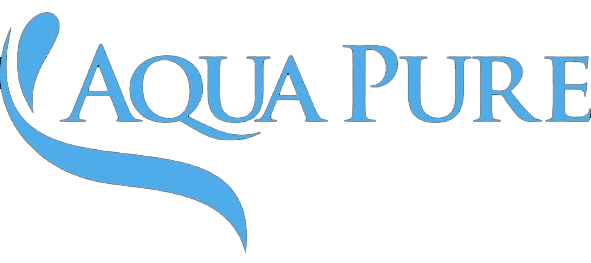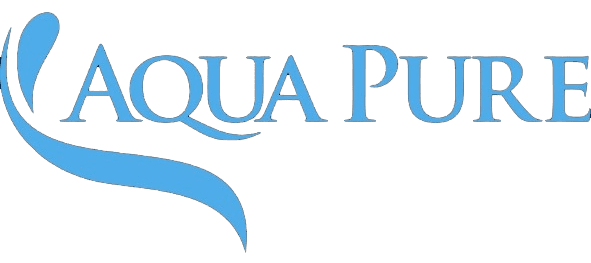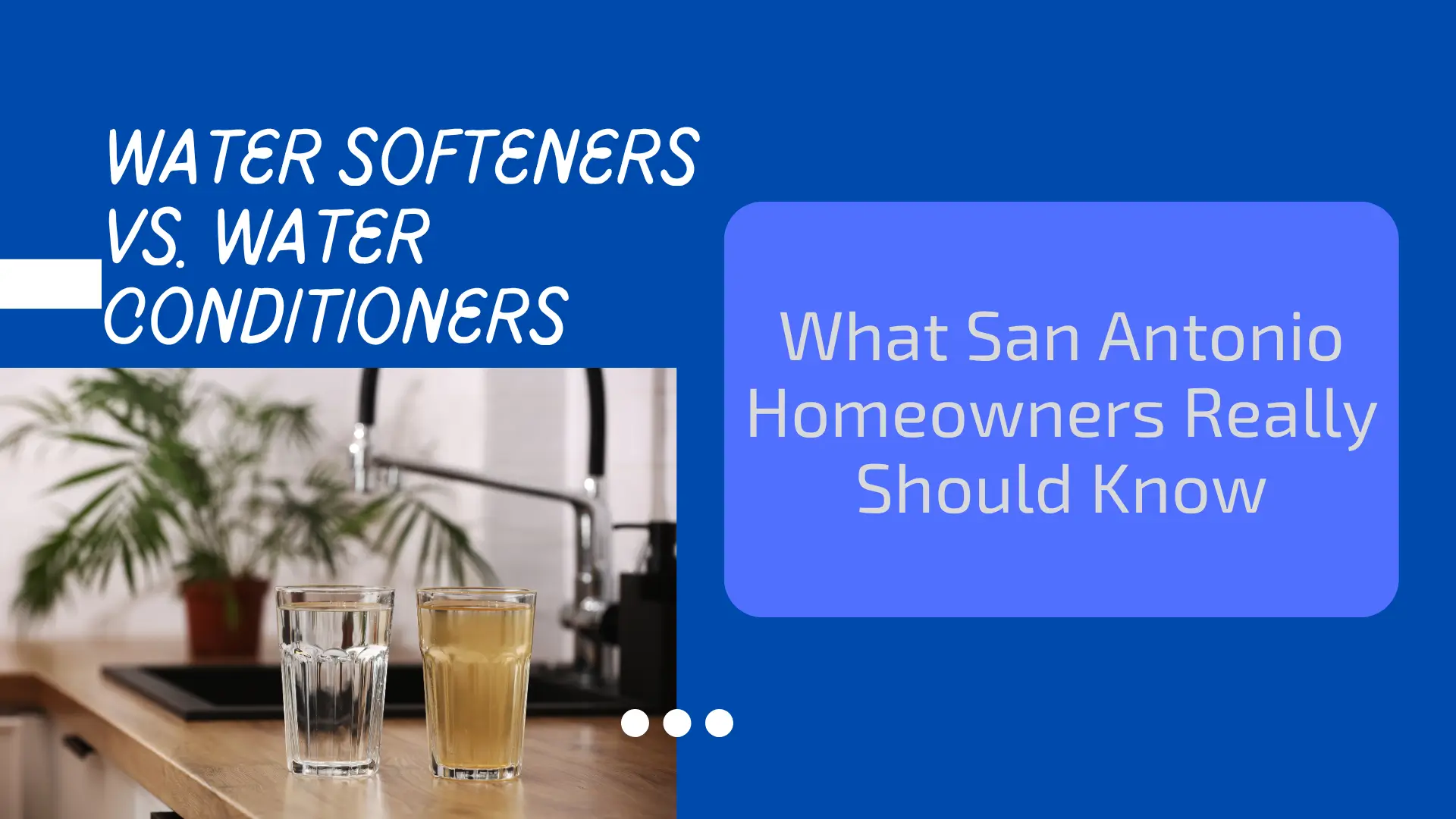If you’re a homeowner in San Antonio (or nearby in the Hill Country), you may have heard neighbors, plumbers, or online ads talk about water softeners, water conditioners, and filtration systems. But what’s the real differenceand more importantly, what’s the best fit for your home?
As someone who lives here, I understand the unique water issues we face (hello, hard water!) and I also know how overwhelming all the technical jargon can be. Think of me as your neighbor who happens to tinker with water science on the side. Let’s walk through this together.
Our Water Landscape Here in San Antonio
Before diving into softeners vs. conditioners, it helps to understand what we’re dealing with locally. San Antonio’s water has some strong plusesand a few challenges worth knowing.
What’s in San Antonio’s Tap Water
- Hard water minerals
San Antonio’s water comes largely from wells tapping limestone aquifers (like the Edwards Aquifer), so it naturally carries high levels of dissolved calcium and magnesium. These are the classic “hardness” minerals. The SAWS 2024 Water Quality Report confirms that we regularly detect hardness in consumer taps. - Chlorine & disinfection byproducts
To keep the water microbiologically safe, SAWS uses disinfectants (usually chlorine) in treatment. Over time, these disinfectants can react with organic matter to form byproducts like trihalomethanes (THMs) or haloacetic acids (HAAs). These are regulated, but they exist in trace amounts in many places. - “Forever chemicals” / PFAS
Like many systems across Texas, SAWS is beginning to monitor for PFAS (per- and polyfluoroalkyl substances), a class of persistent compounds used in industrial and consumer products. In one SAWS report, one well in Castle Hills showed detectable PFAS (though not above federal limits), and because San Antonio blends from multiple wells, the overall system-level PFAS remains lower. - Other trace contaminants, sediment, and occasional bacterial presence
On rare occasions, raw water samples (before disinfection) have tested positive for E. coli. SAWS acted quickly and treated and retestedno consumer-level alerts or boil water notices were required.
Also, sediment or particulate matter can sneak in from older distribution pipes, especially in pressure drops or during line repairs. - A long standing “Superior” rating
One thing San Antonio gets right: the Texas Commission on Environmental Quality has rated SAWS a Superior water system for decades (since 1936) thanks to consistent compliance and water quality efforts. So yes: comparatively, we’re better off than many places. But that doesn’t mean there aren’t issues affecting your appliances, skin, plumbingand possibly healthif you don’t take steps to treat your water at home.
Why These Issues Matter in Daily Life
Let’s translate those “contaminants” into what your household might feel, see, or deal with.
Hard Water (Calcium & Magnesium)
- Scale buildup: Over time, your water heater, pipes, valves, faucets, and fixtures develop a chalky scale (limescale) inside. That reduces efficiency and clogs narrow pathways.
- Shorter appliance life: Dishwashers, coffee makers, washing machinesall are strained by scale, requiring more energy, more cleaning, and earlier failure.
- Soap performance: Hard water reacts with soap and detergents, leaving scum, requiring more product, and making rinsing harder.
- Spotting & cloudiness: You’ll see soap scum on shower walls, cloudy glasses, mineral spots on faucets and shower heads, and a need to scrub more often.
Chlorine / Disinfectant Byproducts
- Taste & odor: Especially in slower-moving pipes or hot water systems, chlorine smell or “chlorinated” taste may be noticeable.
- Dry skin / hair: Chlorine can strip natural oils, making skin and hair feel dry or “tight.”
- Metal corrosion: Disinfectants may accelerate corrosion in older plumbing lines.
- Health concerns (at trace levels): Disinfection byproducts (DBPs) like THMs have been linked in studies to long-term risks. Though SAWS keeps levels within regulatory limits, people wishing to reduce the burden often do additional filtering.
PFAS & Other Trace Chemicals
PFAS are called “forever chemicals” because they don’t break down easily. Exposureeven at trace levelsis being increasingly scrutinized for links to cancers, liver toxicity, immune effects, and more. Even if your water supply is currently under the regulatory thresholds, many homeowners prefer reducing these exposures further via point-of-use filters or specialized systems.
Sediment, Bacteria, and Other Bits
- Cloudy water or grit: Sediment gives visual turbidity or tiny specks in waterespecially after main breaks or transitions in municipal flow.
- Biofilm / bacteria build-up: In stagnant lines, you could get microbial growth. While SAWS monitors for E. coli monthly (and has zero positives in distribution in recent years), plumbing within your home can still harbor buildup.
- Staining: Iron or manganese (less common in SAWS water, but more common in wells elsewhere) cause brown or black stains in sinks, toilets, and laundry.
Water Softeners vs. Water Conditioners: What’s the Real Difference?
Now that we know what we’re trying to fight, let’s clarify what water softeners and water conditioners do (and don’t do).
What Is a Water Softener?
A traditional water softener uses ion exchange to remove calcium (Ca²⁺) and magnesium (Mg²⁺) from water. It swaps them (on a resin bed) with sodium (or sometimes potassium) ions. The net result: the “hardness” is replaced by “soft” ions, eliminating scale-forming behavior.
Strengths:
- Very effective at preventing scale and limescale buildup.
- You’ll see softer soap lather, no scaly deposits, increased appliance longevity.
- Proven technology with decades of use.
Limitations:
- It does not remove chlorine, PFAS, sediment, bacteria, etc.
- Adds a small amount of sodium (or potassium) to the water. (Usually negligible, but for very low sodium diets it’s something to factor in.)
- Requires periodic regeneration (flushes with salt brine) and maintenance.
- Typically wastes a bit of water during regeneration.
What Is a Water Conditioner?
“Water conditioner” is a broader category. Usually, the term is used for systems that alter or stabilize the hardness minerals (instead of removing them). These can include:
- Template-assisted crystallization (TAC)
- Electromagnetic or magnetic descaling
- Catalytic media systems
- Chelation-based systems
These systems generally don’t remove the minerals; instead, they change the way they behave (so they don’t precipitate as scale). In effect, the minerals stay in the water but are “conditioned” so they’re less harmful.
Strengths:
- Typically no salt needed, less waste, less water consumption.
- Lower maintenance.
- Safe for low-sodium diets because they don’t add sodium.
- Can reduce scale formation moderately (though not always as fully as a salt softener, depending on water hardness).
Limitations:
- They may be less effective in very hard water environments (or under high temperatures/pressure).
- They don’t remove chlorine, PFAS, microorganisms, or sediments either.
- Their effectiveness can vary depending on flow rates, temperature, and water composition.
Which One Makes Sense for San Antonio’s Water?
Given our local water chemistry, what should a San Antonio homeowner lean toward?
For typical San Antonio households
Most homes in San Antonio will get the greatest “bang for the buck” from a water softener. Why?
- Our water hardness is fairly high, and scale control is a recurring problem in water heaters, plumbing fixtures, appliances, etc.
- A softener directly eliminates the main cause of scale (calcium and magnesium) rather than just slowing it.
- The side effects (a bit of sodium, water for regeneration) are relatively mild in our region.
That said, some homeowners prefer or need a salt-free conditioner for health or water self-sufficiency reasons. In those cases, a conditioner can help reducebut not eliminatescale and reduce maintenance.
Combination approaches
A hybrid approach is quite smart: use a softener or conditioner for scale control plus a filtration or drinking water system to address chlorine, PFAS, sediment, etc. This way, you get scale prevention and improved water quality downstream (in faucets, ice makers, drinking taps).
How to Detect Whether You Need Softening or Conditioning
Here are practical signs that tell you it’s time to treat your water (or upgrade your system):
- Visible scale buildup on faucets, shower heads, kettle, pipes.
- Cloudy glassware / film / spotting on dishes despite good rinsing.
- Reduced water flow or pressure gradually over time (narrowed lumen in pipes).
- Shortened heater or appliance lifespan e.g., tankless heaters, water heaters, coffee makers needing replacement early.
- Increased use of soap or detergent you feel like you’re constantly adding more soap to get suds or satisfaction.
- Dry, itchy skin or dull, brittle hair especially after baths or showers.
- Strange taste or smell in drinking water could be chlorine or byproducts.
- Sediment, grit, occasional discoloration especially after system maintenance or storm-related line work.
If you notice multiple of these, a water test is strongly recommended.
What Steps Should You Take (Practical Roadmap)
1. Get a professional water test
Don’t guess. A lab-based water quality test (or a combination of tests) will reveal:
- Hardness (ppm, grains per gallon)
- pH
- Chlorine / chloramines
- Sediment / turbidity
- Metals (lead, copper)
- PFAS (if you opt for it)
- Microbial markers (if needed)
Aquapure offers free water test services in the local area, with no obligation. This is a solid first step.
2. Interpret the results, prioritize
Once you have the numbers, classify:
- High hardness → scale issue priority
- Chlorine/DBPs / taste issues → filtration priority
- PFAS / trace organics → advanced filtration or RO
- Sediment / grit → pre-filtration or sediment filters
3. Choose your system(s)
Here are realistic options:
| Goal | System Type | Notes / Tradeoffs |
| Scale control (primary) | Water softener (ion exchange) | Most direct, proven, handles strong hardness. |
| Lower maintenance / salt-free | Water conditioner | For lower hardness areas or as supplement; may not fully eliminate scale. |
| Chlorine / DBP / PFAS / taste | Whole-house carbon or activated media filters | Doesn’t treat scale but improves water quality. |
| Ultra-pure drinking water | Point-of-use RO or advanced filtration | Installed under sink or at drinking tap. |
| Hybrid solution | Softener + whole-house filter | Best of both: scale control and better water quality across home. |
4. Consult for customization and installation
Because every home’s plumbing, flow demands, fixture layout, and water chemistry differ, it’s smart to get a tailored design. Aquapure offers:
- Customized solutions for each home
- Certified technician installation & support
- $0 down financing / Buy Now – Pay Later
- Lifetime warranties, so you don’t feel stuck later
5. Maintain & monitor
Whatever you install, periodic checks and maintenance are critical. For example:
- Check salt levels or media life (softener/conditioner)
- Replace filtration cartridges or media per schedule
- Keep an eye on pressure drops or flow changes
- Retest water quality every few years (or after major usage changes)
Real Local Scenario: A San Antonio Home Example
Let’s say Carlos and Maria live in Stone Oak (Northeast San Antonio). They noticed:
- Their coffee machine developed scale deposits in months rather than years.
- In their bathroom, faucets constantly had a whitish film, and shower heads clogged.
- Their water tasted slightly “off” (chlorine-like) from certain faucets.
They got a municipal water test and confirmed:
- Hardness: ~14 grains per gallon (very hard)
- Chlorine residual: within acceptable range
- No alarming PFAS levels (within limit)
- Slight sediment occasionally during main line work
A practical setup for them:
- A water softener at the point of entry to handle the hardness.
- A whole-house carbon filter after the softener to remove chlorine and disinfection byproducts (improving taste and smell).
- A reverse-osmosis (RO) or advanced filter for the kitchen tap to further “polish” drinking water (especially for PFAS or trace organics).
Such layered approach gives them scale control and good water quality for health and taste.
Pros and Cons Summary
Water Softener Pros
- Strong, consistent scale prevention
- Longer life for plumbing, appliances
- Better soap performance
- Very mature, proven tech
Water Softener Cons
- Needs salt and regular regeneration
- Slight water waste during regeneration
- Doesn’t address chlorine, PFAS, sediment
Water Conditioner Pros
- Low or no salt, no brine, less waste
- Slight scale mitigation
- Lower maintenance
Water Conditioner Cons
- Less effective in high hardness or extreme conditions
- Doesn’t remove contaminants
- Results vary depending on water chemistry
Local FAQ for San Antonio / Katy Area
Q: Is San Antonio tap water safe to drink?
A: Yes, generally. SAWS meets federal and state water quality standards and has a long “Superior System” rating. However, like many systems, its water carries high hardness, chlorine disinfectant, and trace chemicals. Many homeowners install home treatments to reduce scale, improve taste, and reduce possible low-level contaminants.
Q: Do I absolutely need a water softener in San Antonio?
A: Not absolutely. But if you want to reduce scale, increase appliance life, and save on cleaning and energy costs, a softener makes a lot of sense locally. In milder hardness areas, a conditioner might suffice, but in our fairly hard water region, a softener is often the safer bet for long-term protection.
Q: How much does a softener + filtration system cost in San Antonio / Katy?
A: Costs vary widely depending on home size, water demand, system specs, and complexity of plumbing integration. Basic systems might run a few thousand dollars; turnkey premium setups can go higher. What matters more is long-term valuereduced maintenance, fewer repairs, energy savings, and peace of mind.
Q: What if I live in Katy, TX (or outside SAWS service)?
A: Similar principles apply. In Katy, the water system also deals with hardness, chlorine, sediment, and trace chemicals. The City of Katy maintains a “Superior” water system rating, and you can view their annual report. Test your local tap, then decide between softeners, conditioners, or filtration based on your test results.
Q: How do I choose between systems?
A: Have your water tested first. Use the data to decide which contaminants or scales to treat. Talk to installers who can customize for your home’s plumbing layout. Don’t just buy off-the-shelf local adaptation and support are important.
Final Thoughts & What You Can Do Next
- San Antonio’s water is pretty good overallbut our hardness and chlorine components mean many homeowners benefit significantly from additional home-level treatment.
- A water softener will tackle scale most robustly; a water conditioner offers a salt-free alternative with less aggressive performance.
- For full peace-of-mind, combine scale treatment with filtration systems (for chlorine, PFAS, etc.).
- Always start with a precise water testdon’t guess.
- Work with companies that know the San Antonio area (or your local service area) and can customize and support their installations.



